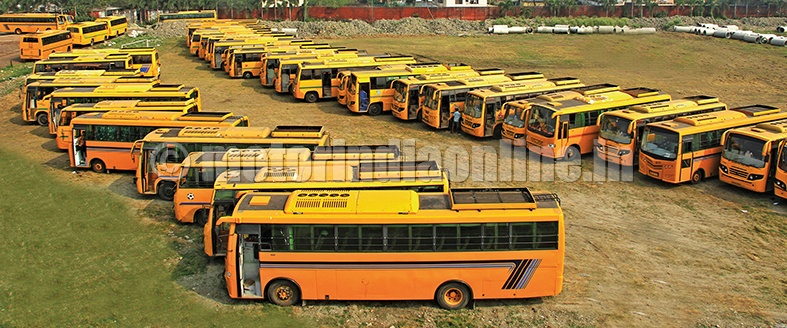The school bus segment is one of the most important portfolios for any vehicle manufacturer owing to its considerable market potential. There were good old days when a regular generic chassis for any application was bought and the body was fabricated at a body builder with just minimum key user factors. But with growth in population and expanding customer requirements, the technology behind school bus building has taken a huge leap forward.
In the current scenario, a detailed market study was conducted on the specific requirements of various stakeholders in the segment, including school children, parents and even children’s attendants while designing school buses. With unique features like tooth guards, semi-sliding windows, racks for school bags and notice board, school buses are unique in many ways and have come with inputs from all key stakeholders involved.
Also, now with the Government drive towards pushing the limits of safety, the ‘Bus Body Code AIS 052’ and ‘School Bus Code AIS 063’ regulations have been put in place to ensure safety. The Bus Body Code specifies certain aspects of how a bus is to be built in terms of space between seats, low steps for easier entry and exit, a mandated roll-over test, NVH and other stipulated standards related to safety, design and comfort.
With factory-built buses dominating this segment, for reasons of convenience and safety, all the manufacturers have given their best to attract school children and schools alike. With drawing boards revisited post receiving inputs from school children, technologies like telematics are also getting into place.
The cost per seat is the prime buying factor, and in order to reduce it, wider-track school buses are being launched now. With layouts ranging from 2×2 to 3×3, the seating capacity goes up to 60 seats for even ICV buses. Going forward, we could expect air-conditioning becoming a norm while the segment could also see some new developments related to air suspension, safety cameras and enhanced telematics features like SMS alerts. We could also not miss the potential of the segment to get outsourced to fleet operators.
Going forward, the school bus segment is likely to see an upswing in demand. With close to 20,000 plus school buses being sold every year, growth is expected to be not less than 10 per cent in the current financial year as compared to the last.
In this special feature, we bring you updates on major players in the segment, covering aspects such as the current market scenario, evolving trends and the future outlook.
Co-authored by Preetham Sri Krishna Vignesh

